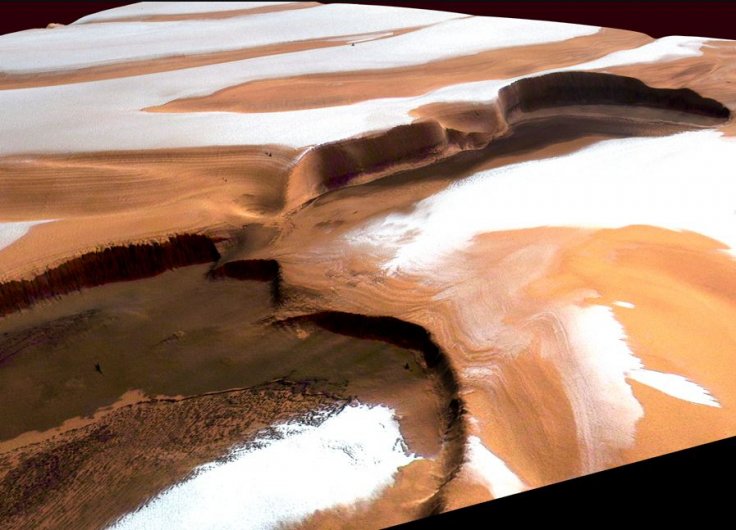Knowing if life existed or exists on Mars has been a key frontier for human beings since the advent of space exploration decades ago. Finding water on the red planet strengthened the possibility of finding alien life. However, a new study states that floods of inconceivable scales—megafloods—once washed through the surface of the planet nearly 4 billion years ago; tilting the needle in the direction of life having once prevailed on Earth's cosmic neighbor.
The research, which is based on data gathered by NASA's Curiosity rover, found that the Gale Crater located on Mars' equator, was once a site that was washed through by massive floods billions of years ago. The turbulent megaflood may have begun due to the heat generated by a meteoritic impact. This unloosened the ice that was stored on the planet's surface. Thus, setting up enormous ripples, that are characteristic geologic formations that scientists on Earth are familiar with.

"We identified megafloods for the first time using detailed sedimentological data observed by the rover Curiosity. Deposits left behind by megafloods had not been previously identified with orbiter data," said Alberto G. Fairén, co-author of the study, in a statement.
Evidence Preserved In Ice
Geological features such as the effects of wind and water have been preserved within the frozen ice on Mars for around 4 billion years; much like how it has been on Earth. Therefore, these geological trademarks serve as an explanation of how the surfaces of the two neighboring planets were carved in their past.
According to Prof. Ezat Heydari, lead author of the study, in the case of Mars, it consists of the existence of colossal wave-shaped features in Gale crater's sedimentary layers. These features are called 'antidunes' or 'megaripples', which are around 30 ft in height and positioned about 450 ft apart.

Prof. Heydari also said that these megaripples are suggestive of megafloods that flowed around 4 billion years ago at the bottom of the Gale Crater. These features, according to the physicist, are similar to the features created on Earth by melting ice around 2 million years ago.
What Caused the Megaflood?
So the question is—What caused the megaflood on Mars? The researchers posit that the flooding was caused by the heat produced by a huge impact. This led to the release of methane and carbon dioxide trapped within the frozen ice of the planet. The water vapor, combined with the release of the warming gasses, produced a brief duration of wet and warm conditions on Mars.
The condensation process led to the formation of vapor clouds, which in succession led to the creation of relentless rains, probably across the planet. The water created entered the Gale Crater. Following which, it combined with the water descending from Mount Sharp (found within Gale Crater) to cause enormous flash floods that left behind the ridge-and-trough band formations in the striated grounds and gravel ridges in the Hummocky Plains Unit (flood deposits in Gale crater).

The team was also able to establish that persistent streams and lakes once existed in the Gale Crater. These large bodies of water serve as positive indicators that microbial life could have been supported by the crater and Mount Sharp as well.
"Early Mars was an extremely active planet from a geological point of view. The planet had the conditions needed to support the presence of liquid water on the surface – and on Earth, where there's water, there's life," expressed Fairén.









